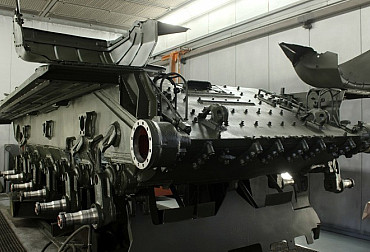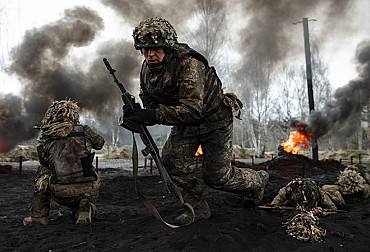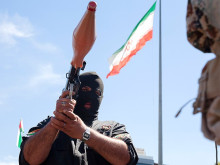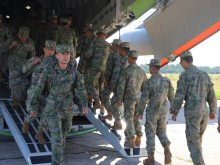Not only weapon systems are evolving, but also tactics
Current conflicts in Ukraine and the Middle East vividly demonstrate the need for adopting progressive approaches to conducting combat operations. It is essential to recognize the specific factors influencing combat and understand how to adapt to or leverage them.
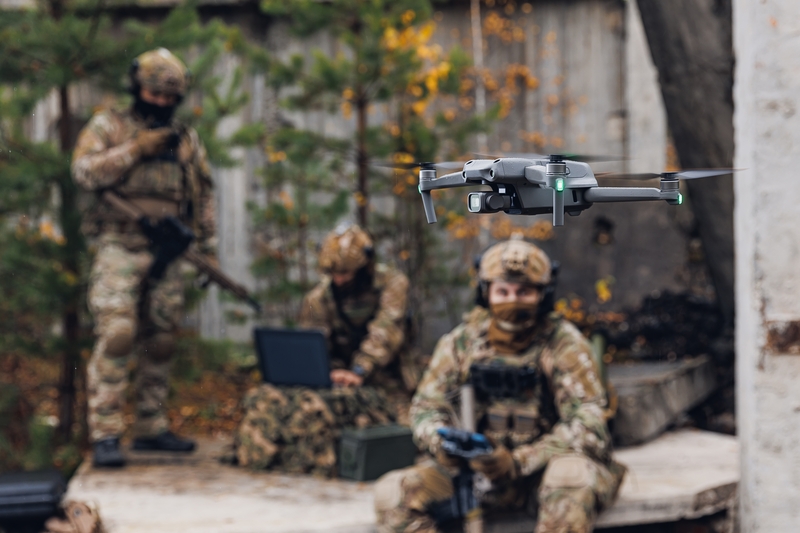
These factors certainly include the enemy’s capabilities, our own capabilities, terrain, and weather. Regarding both our capabilities and those of the enemy, their level will be determined by the quantity and technical sophistication of equipment, the training of units, acquired experience, support from allies, as well as determination, resilience, and adaptability to changing conditions.
Another factor is the ability to develop and implement new technologies, including effective operational and tactical procedures or long-term strategies with a global geopolitical impact. In recent conflicts, the “battlefield” has been shaped by the widespread deployment of various types of drones (reconnaissance, combat, “drone hunters,” etc.) with varying ranges. These solutions are generally much cheaper than the cost of munitions used to neutralize them. One of the potential purposes of deploying drones may be to weaken or exhaust the enemy’s air defense, which has a significant impact when using expensive guided missiles.
The deployment of attack drones aimed at destroying enemy equipment and personnel is a vital means of countering mechanized and infantry enemy units. In addition to dropping standard munitions, drones can also be used to deploy individual mines or minefields. The element of surprise in using these tools (especially remote-controlled mines and traps) can not only cause losses in equipment and personnel but, when well-timed, can also significantly influence the course of operations. Important targets might include strategic terrain segments on the front lines of our units (re-mining pathways through minefields) or transportation hubs in the enemy’s rear.
Another important factor impacting combat operations is the readiness of units for battle and the skilled use of designated units to perform specific tasks such as urban combat (including tunnels and underground spaces), breaching explosive and non-explosive barriers, and fighting at night or in the enemy's rear. Combat experience brings a significant advantage, as it tests soldiers' capabilities, resilience, and reliability.
Changing battlefield conditions and tactics
Recent experiences from Ukraine show that adaptability to new battlefield conditions plays a crucial role. With the arrival of autumn weather, both front-line and rear units must contend with the falling leaves, which complicate the camouflage of both equipment and personnel. The use of wooded areas, tree lines, or natural camouflage materials is becoming less effective.
The mass use of drones by both sides has made it far more difficult to cross so-called no-man's land. The sustained losses on the Russian side have led to a change in the tactics of deployment of Russian troops, with various procedures being observed in order to reduce their own losses and increase the chances of overcoming the defences of Ukrainian positions. These include the deployment of infantry units, which first penetrate in small groups into the vicinity of Ukrainian positions, where they reunite in designated areas to form a grouping designed to break through Ukrainian positions and then to occupy and hold the designated area. The success of this approach, based on the ability to disperse and reintegrate, is due to the high degree of synergy and coordination, to a greater or lesser extent with other elements of support (artillery, drones, air force, electronic warfare assets, etc.).
The response to this tactic could be the early establishment of a system of engineer roadblocks, which, among other things, will allow the enemy forces to be directed into an area that will be covered by the fire of their own fire assets, especially artillery.
Thoughtful manoeuvre by troops with skilful use of terrain and available resources also contributes to reducing the likelihood of detection. The element of surprise also has a significant impact on the success of operations (both offensive and defensive), which also leads to a reduction in own casualties. In addition to camouflage, deception contributes to this, beginning, for example, with the use of weather (visibility) and ending with information warfare at the political level.
Asymmetric Conflict
Both sides in the conflict are continuously learning from each other, with a recent major focus on managing high casualty rates and the resulting limitations. Russia, for instance, is attempting to leverage its larger available troop numbers, while Ukraine, supported by allies, aims to inflict maximum losses on Russia, making each advance costly. The fundamental strategy now is to pressure Russia to abandon further pursuit of the war, as its will and resolve to continue on these terms are expected to weaken. This situation extends beyond the battlefield, with economic and political factors playing a significant role and potentially continuing to do so.
On the battlefield, drone and guided missile strikes launched from behind friendly lines support this goal. In addition to purely military targets (such as command posts, ammunition depots, other logistics facilities, concentrations of Russian troops, and naval targets), drones are increasingly targeting arms and oil industry facilities deep within Russia. Russia, meanwhile, has focused on destroying Ukraine's energy infrastructure.
The ongoing course of the conflict in Ukraine underscores the importance of establishing sufficient reserves for both offense and defense, including military supplies, robust logistical support, and production capacity.
Monitoring the role that North Korean units may play on the Ukrainian battlefield will also be crucial. Their deployment by Russia represents a further escalation, but on the other hand, it could serve as a bargaining chip in peace negotiations. We are witnessing a geopolitical shift, with North Korean soldiers now appearing in the European theater. Notably, Chinese troops also trained in Belarus near the Polish border in July this year. If Russia were to reach a peace settlement with Ukraine, we could expect a new geopolitical reality with new security risks, as has been seen following previous conflicts.
The asymmetric nature of conflict can be even more clearly illustrated in the case of Hamas or Hezbollah against Israel. Hamas and Hezbollah are waging an explicitly asymmetric war against Israel, where both sides differ in military power and tactics, exploiting both their own strengths and the weaknesses of their opponent.
Although Middle Eastern conflicts may feel more distant to us, their consequences—migration, terrorism, organized crime—affect us profoundly. Moreover, powerful and influential players with vested geopolitical interests lie behind these situations. It is likely, therefore, that any shifts in their positions will have direct impacts on the actual situation on the ground.
Future Developments
Should the conflicts in Ukraine or the Middle East persist, the introduction of autonomous systems will become increasingly significant due to the shortage of personnel and the effort to shorten the time soldiers spend in "dangerous environments." Alongside the continued evolution and increasing effectiveness of drones (UAVs), ground-based autonomous robotic systems (UGVs) will also be developed. These, much like drones, will play a growing role in combat operations, supported by advancements in artificial intelligence. This trend will also bring requirements for modularity and specialization of units, including modern equipment suited to assigned tasks and objectives.
Given the high costs of equipping armed forces and conducting conflicts, efficient and purposeful solutions will be increasingly sought. Future conflicts will likely be characterized by asymmetry, making it more challenging to predict their outcomes and consequences. These will not only be about direct clashes between military forces but will also involve significant attacks on political and economic systems, as well as efforts to influence the public consciousness—even in nations not directly involved in the conflict.
The conflict in Ukraine shows that economic sanctions and other measures against Russia have not achieved the anticipated results, as Russia has not been successfully isolated. Recent reports from the latest BRICS economic meeting in Kazan, Russia, also reflect this. On the contrary, due to this conflict, the West—and particularly Europe—now faces economic issues that may, in the future, destabilize political and social systems in some countries.















